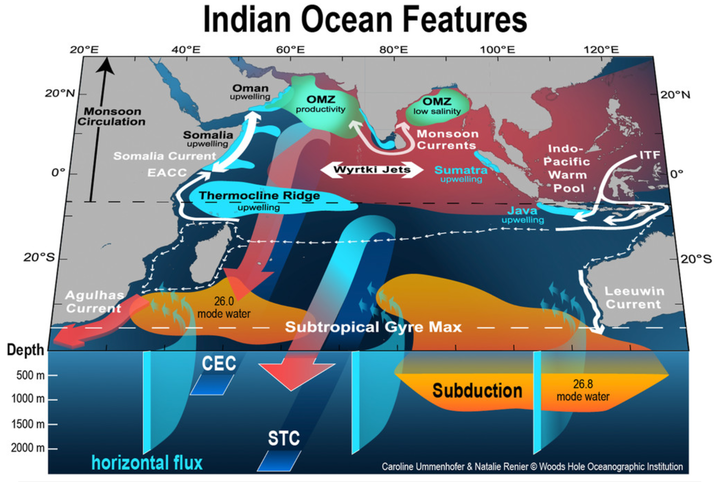A Road Map to IndOOS-2: Better observations of the rapidly-warming Indian Ocean

Abstract
The Indian Ocean Observing System (IndOOS), established in 2006, is a multinational network of sustained oceanic measurements that underpin understanding and forecasting of weather and climate for the Indian Ocean region and beyond. Almost one-third of humanity lives around the Indian Ocean, many in countries dependent on fisheries and rain-fed agriculture that are vulnerable to climate variability and extremes. The Indian Ocean alone has absorbed a quarter of the global oceanic heat uptake over the last two decades and the fate of this heat and its impact on future change is unknown. Climate models project accelerating sea level rise, more frequent extremes in monsoon rainfall, and decreasing oceanic productivity. In view of these new scientific challenges, a 3-yr international review of the IndOOS by more than 60 scientific experts now highlights the need for an enhanced observing network that can better meet societal challenges, and provide more reliable forecasts. Here we present core findings from this review, including the need for 1) chemical, biological, and ecosystem measurements alongside physical parameters; 2) expansion into the western tropics to improve understanding of the monsoon circulation; 3) better-resolved upper ocean processes to improve understanding of air–sea coupling and yield better subseasonal to seasonal predictions; and 4) expansion into key coastal regions and the deep ocean to better constrain the basinwide energy budget. These goals will require new agreements and partnerships with and among Indian Ocean rim countries, creating opportunities for them to enhance their monitoring and forecasting capacity as part of IndOOS-2.